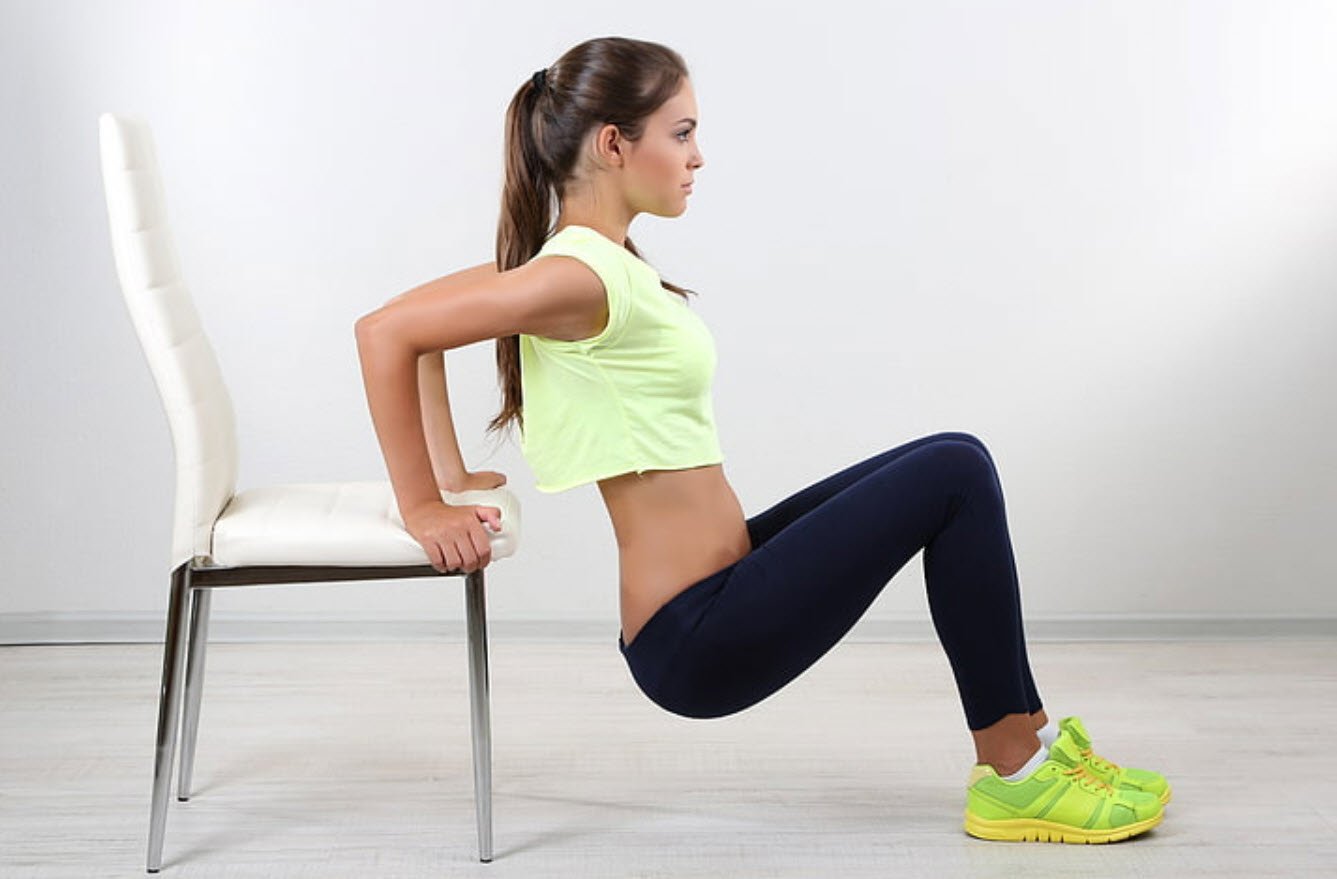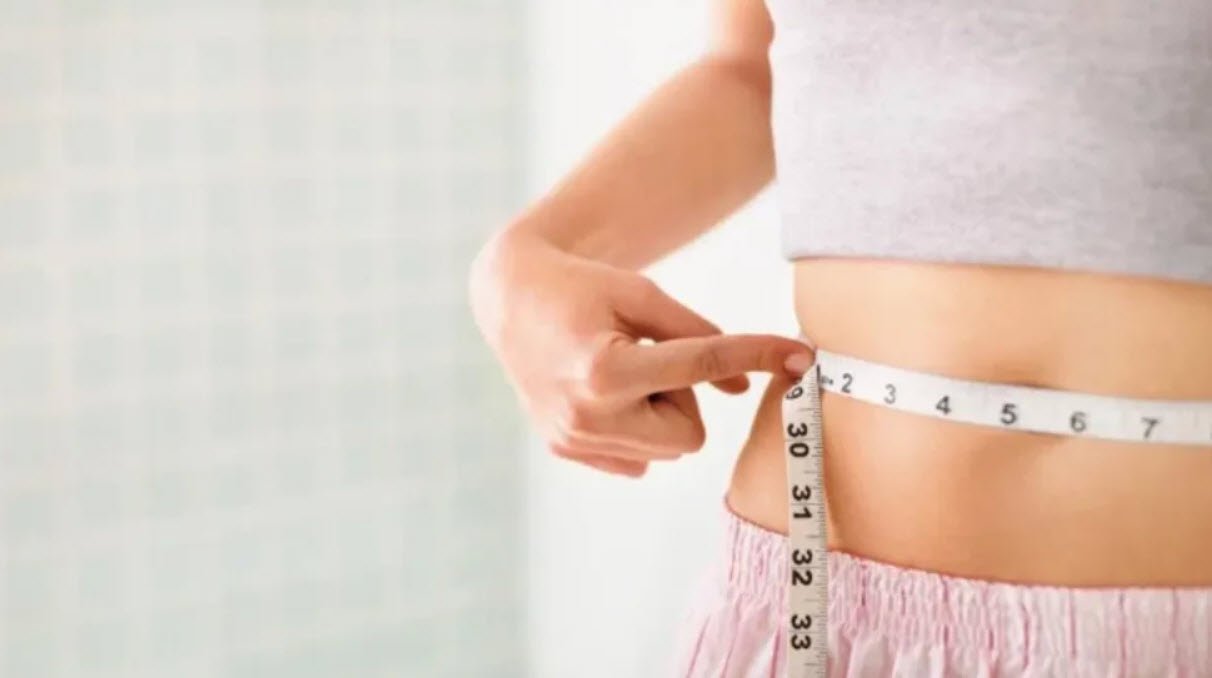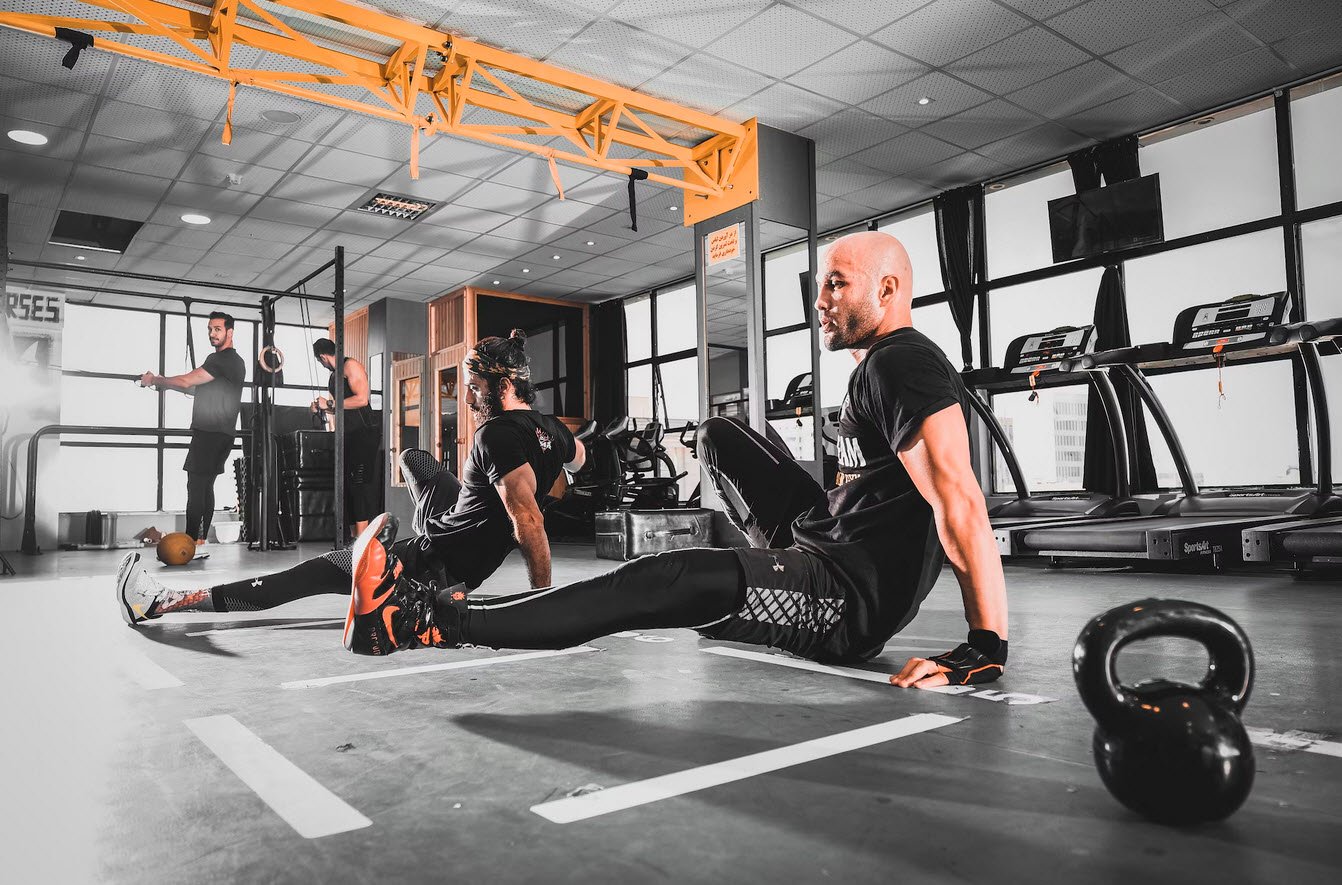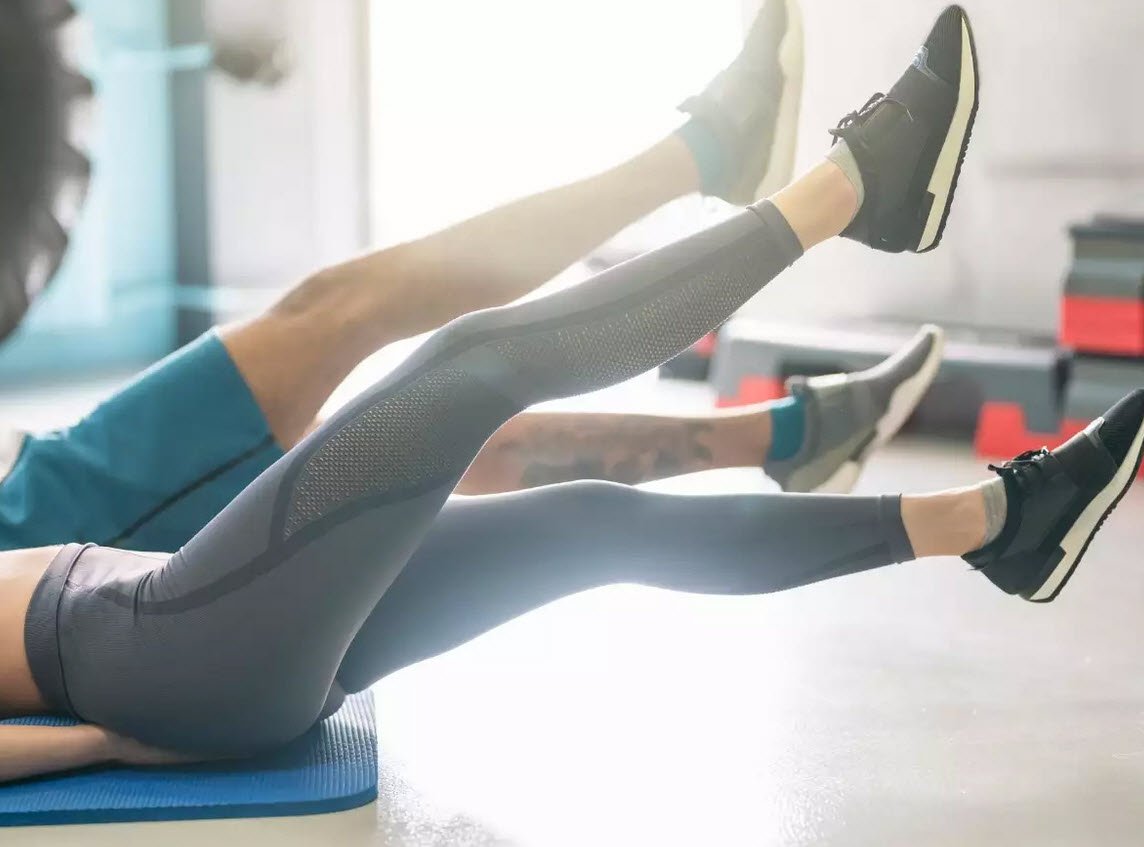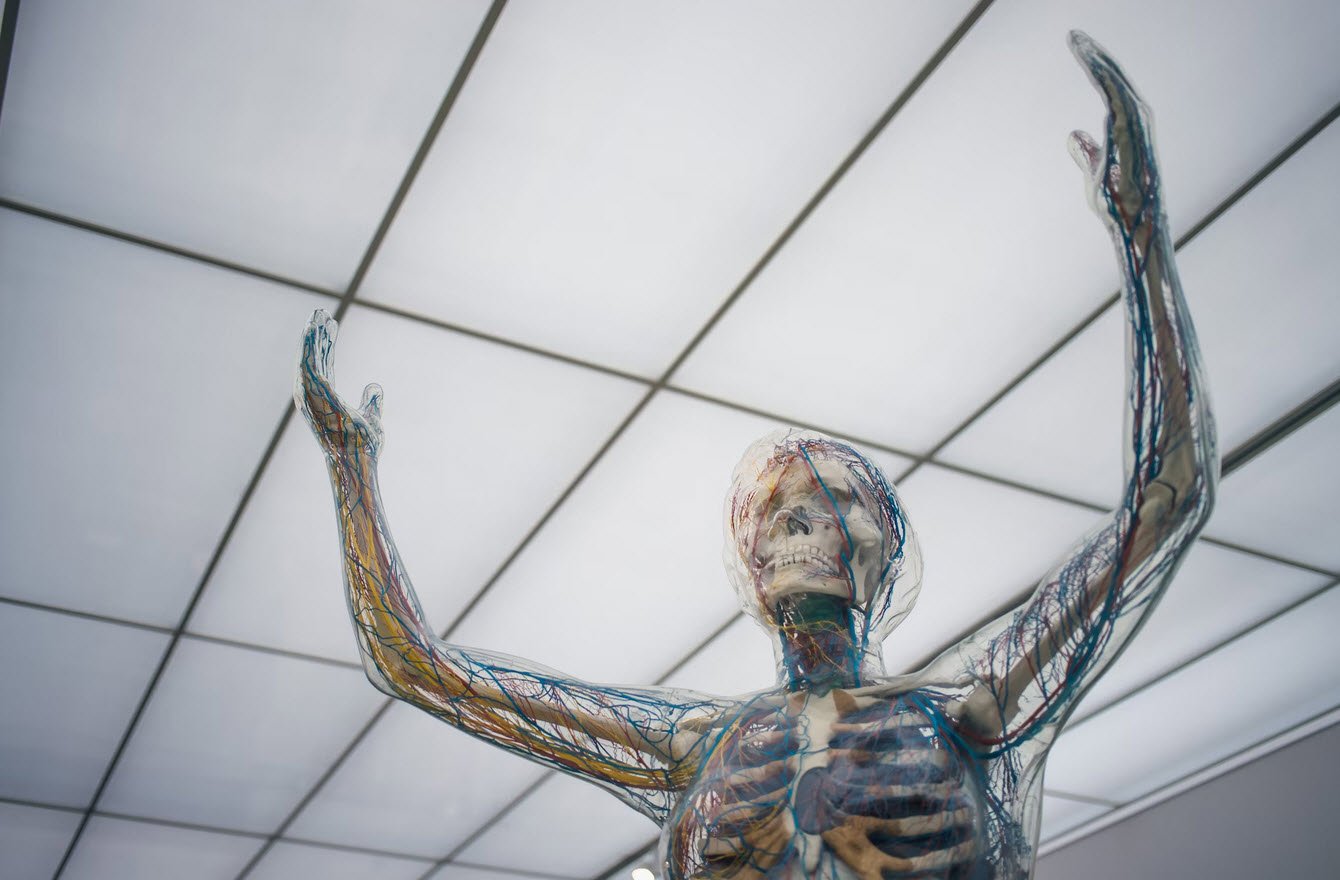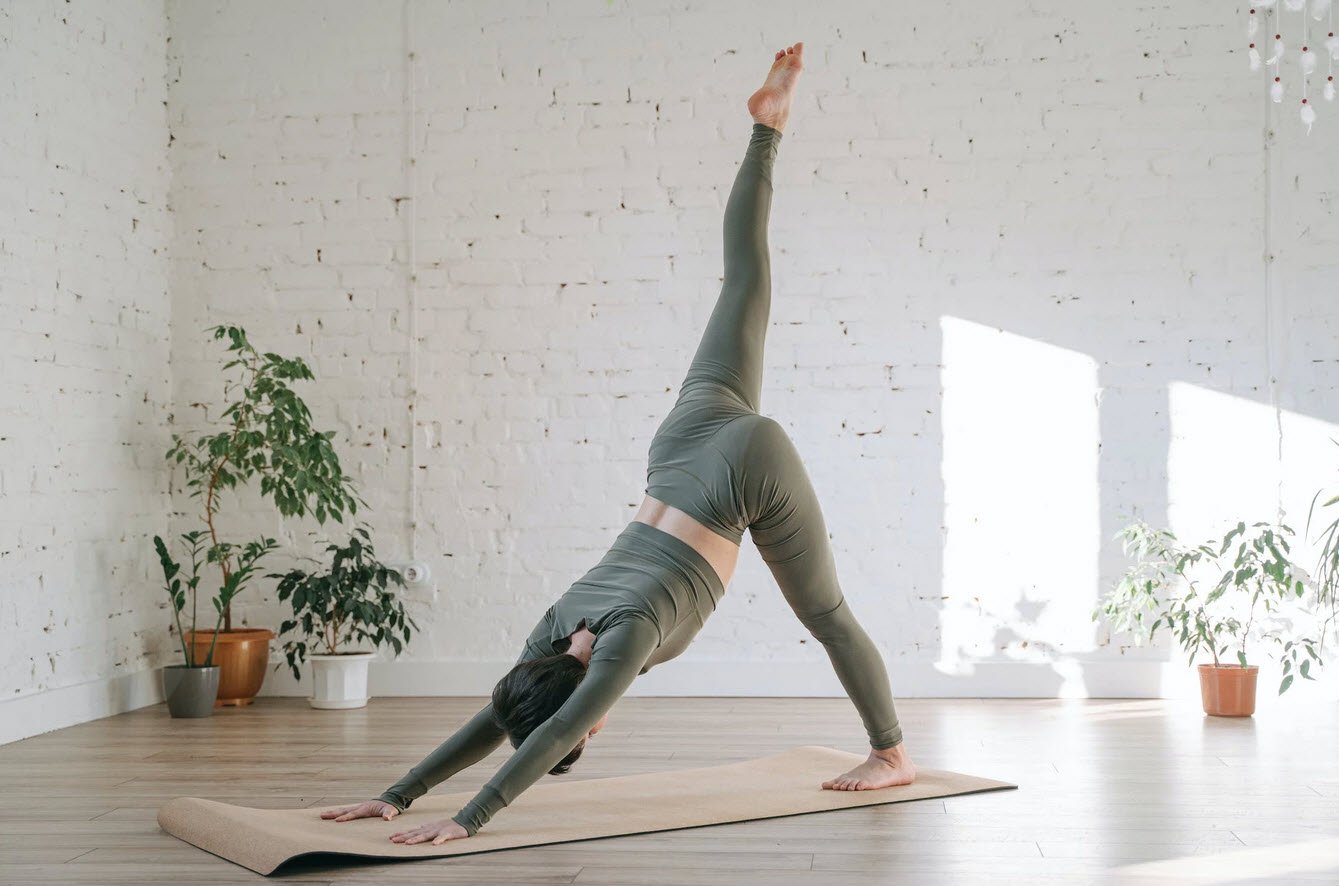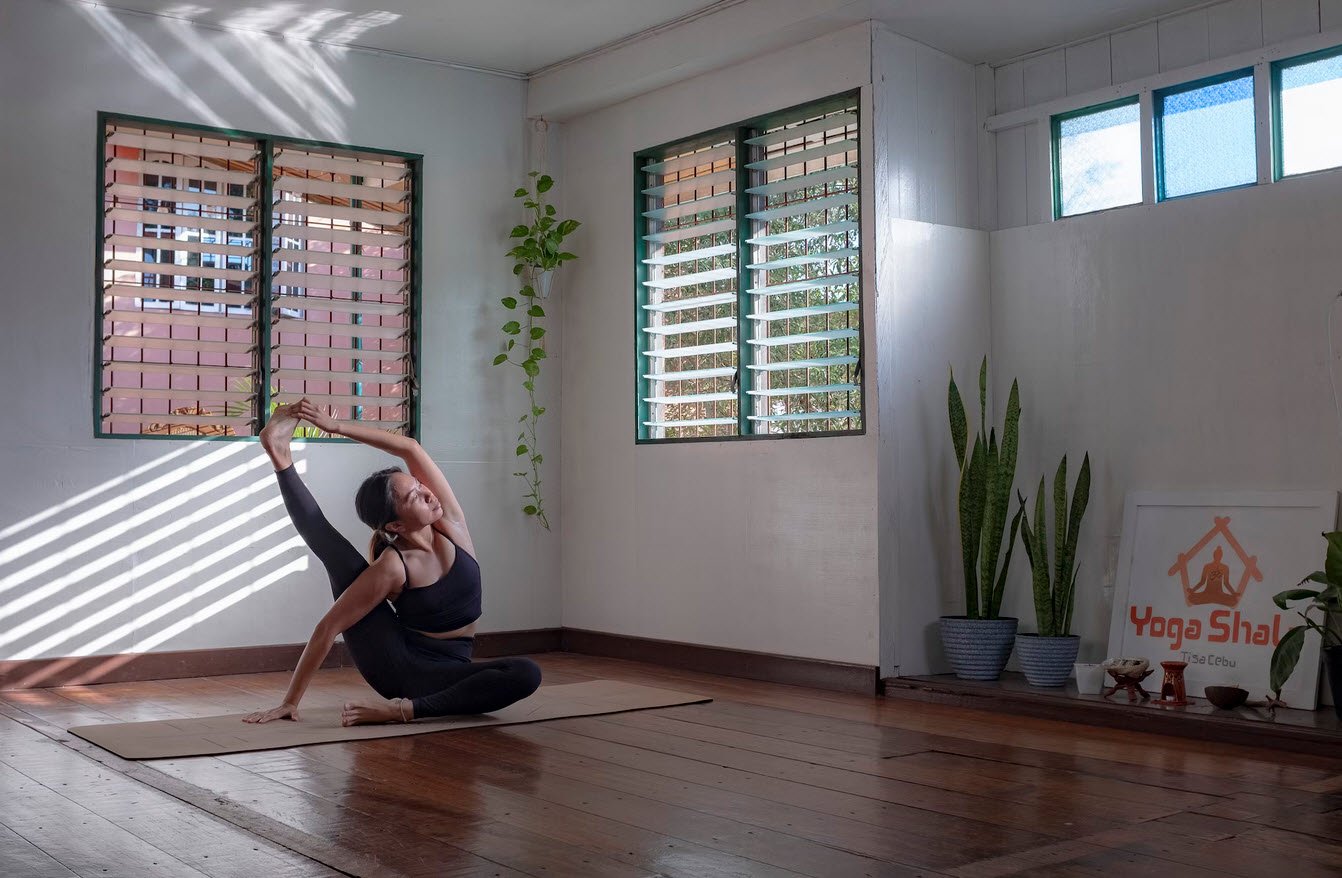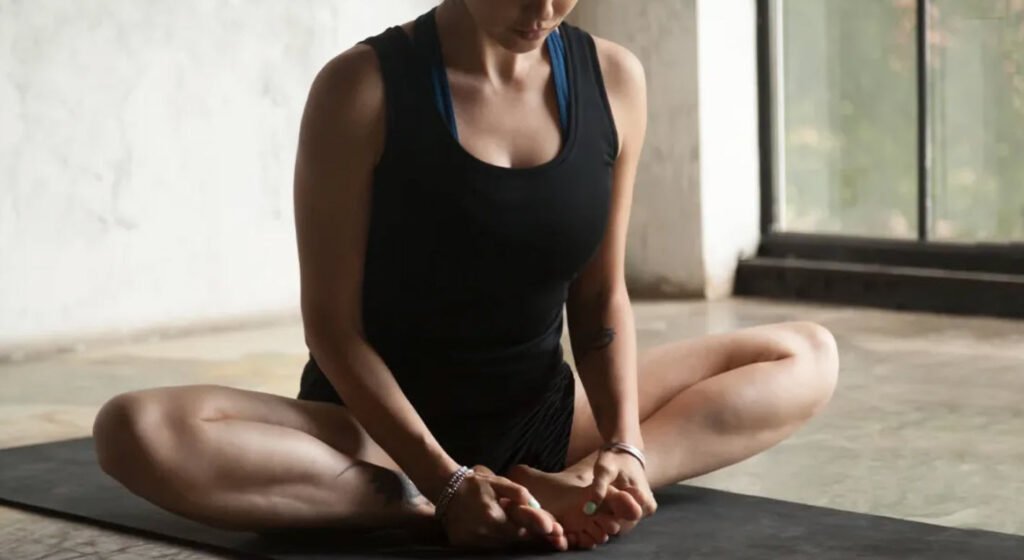
Butterfly Pose, also known as Bound Angle or Cobbler Pose, is an excellent yoga posture that targets the hip flexors and core muscles. This pose helps improve hip flexibility, allowing for more mobile hips and fluid change of direction movements in the lower body.
By regularly practicing Butterfly Pose, you can increase the range of motion in your hips, promote relaxation, and cultivate a greater mind-body connection.
In this article, we will explore the technique, practical benefits, and essential tips for performing Butterfly Pose effectively.
Technique:
1. Starting Position: Begin in a seated position on the ground or on a yoga mat.
2. Position of the Feet: Press the soles of your feet together and grip the outsides of your feet with your hands. Allow your knees to naturally fall open, creating a diamond shape with your legs.
3. Heel Placement: Pull your heels in toward your groin, as close as comfortable. The goal is to bring your feet as close to your pelvis as possible while maintaining a comfortable stretch.
4. Engage the Lower Body: Use the strength of your lower body to gently press your knees toward the ground. Be mindful not to force the movement; instead, allow the knees to naturally descend with each breath.
5. Upright Posture: Sit as upright as possible, elongating your spine. Engage your core muscles to flatten your spine, lift your chest, and draw your shoulders down. This posture helps maintain proper alignment and promotes an active engagement of the core.
6. Hold and Duration: Hold Butterfly Pose for 30 to 60 seconds, focusing on deep, relaxed breathing throughout the pose. Gradually increase the duration as your flexibility improves over time.
Tips for Safe and Effective Practice:
- It’s essential to listen to your body and respect its limits. Avoid any pain or discomfort, and adjust the pose accordingly. You should feel a gentle stretch in your hips and inner thighs, but not strain or sharp pain.
- Butterfly Pose can also be practiced in a more relaxed version to stretch the lower back. To do this, gently fold your upper body forward, lengthening your spine. Allow your head to release toward the ground, promoting relaxation and deepening the stretch.
- If you experience discomfort or tension in your knees or hips, you can place yoga blocks or folded blankets under your knees for additional support. This modification can help alleviate strain and allow for a more comfortable practice.
- Like any yoga pose, regular practice is key to experiencing the full benefits of Butterfly Pose. Start with shorter holds and gradually increase the duration as your flexibility improves over time.
- As you hold Butterfly Pose, bring awareness to your breath and the sensations in your body. Use this time to cultivate a deeper mind-body connection and create a sense of relaxation and ease.

Incorporating Butterfly Pose into your fitness routine can lead to increased hip flexibility, improved core strength, and a greater sense of relaxation and mindfulness. Remember to practice with proper alignment, respect your body’s limits, and focus on deep, relaxed breathing.
With consistent practice, you can enjoy the practical benefits of more mobile hips and a more fluid range of motion in your lower body.
You may also like:- 100 Best Yoga Books – Free Download
- Using Yoga for Weight Loss – Balancing Body and Mind
- Kapalabhati – A Breathing Exercise for Holistic Well-being
- 7 Killer Ways to Maximize Fat Burning in the Gym
- Improving Blood Circulation in Your Legs – Simple Exercises for Better Leg Health
- Long-Term Effects of Exercise on the Muscular System
- Top 8 Guidelines for the Practice of Asanas
- Top 4 Physiological Benefits of Asanas
- The 5 Benefits of Yoga You Need To Know
- How To Do Eagle Arms Yoga – Tips and Techniques

